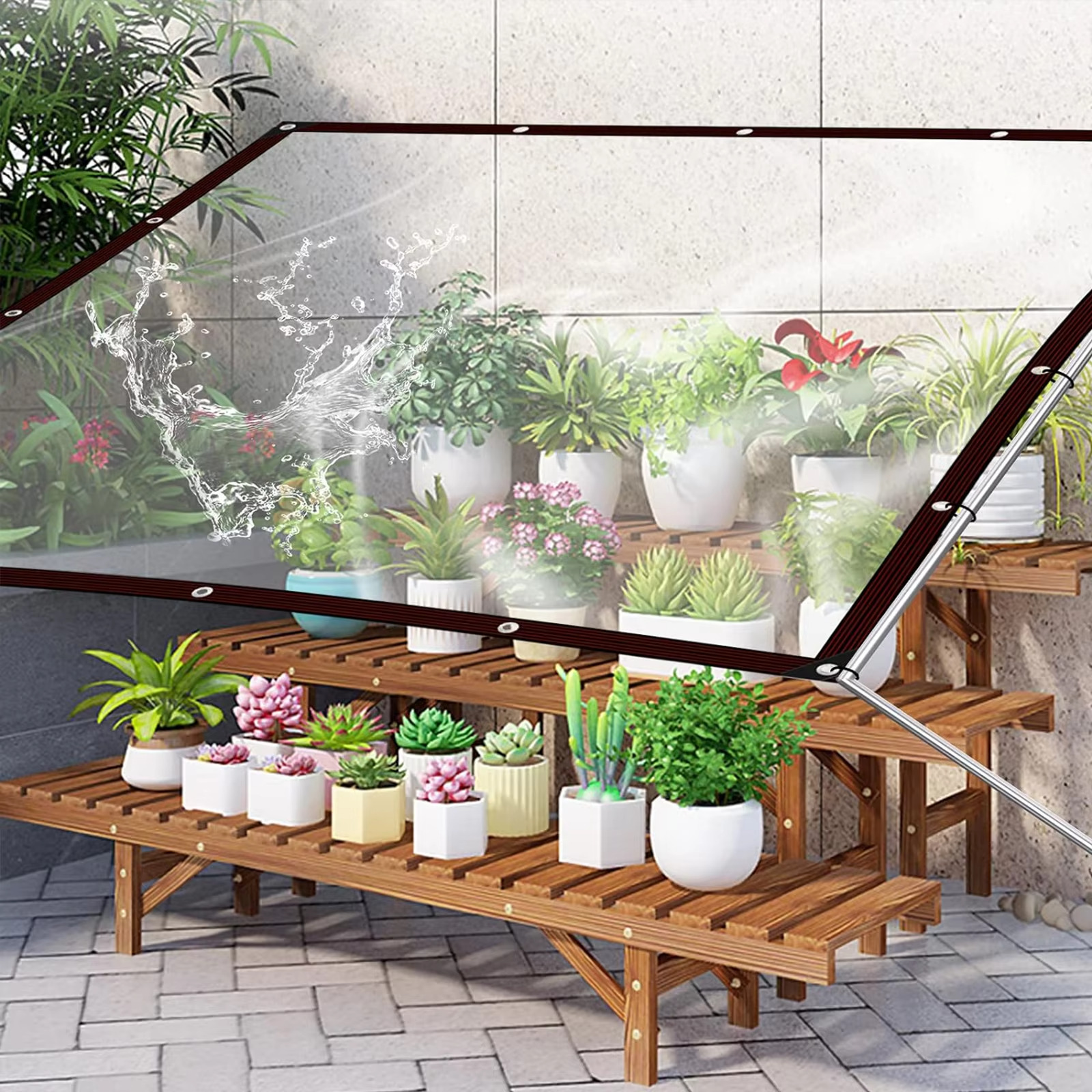Tarpaulin also blocks heavy rainfall, hail, or winds from battering more vulnerable seedlings, young plants, or plants prone to mold or rot when foliage stays wet. This allows you to expand the variety of plants grown and extend your overall growing seasons earlier in spring and later in fall. A flexible Clear Tarpaulin shelter also provides welcome shade for enjoying the garden on extra warm days.
Choosing the Right Tarpaulin Material
When selecting a tarpaulin material, it’s important to consider both short-term and long-term durability based on the climatic conditions your garden shade structure will face. Key factors include choosing between plastic or cloth tarpaulins, selecting an appropriate weight and thickness, finding one with UV resistance, and getting the right size.
Plastic vs Cloth Tarps
Plastic tarps are often more affordable and lightweight than cloth options. However, plastic is non-breathable and prone to breaking down more quickly from UV exposure, typically lasting only 1-2 years before replacement is needed. Cloth tarps made of polyester or woven polyethylene are slightly heavier duty materials that allow air and moisture to pass through.
Tarp Weight and Thickness
Heavier 12-16 ounce tarps are better suited for windy areas as they hold their shape better without flapping. However, 8-10 ounce tarps may suffice in calm climates with little wind. The thickness of a tarpaulin also impacts its shading capabilities – thicker Tarpaulins block more sunlight for adequate shade while thinner tarps allow greater light penetration.
UV Resistance Coatings
Look for tarps marketed as having UV protective coatings, as this additional layer safeguards the material from sunlight damage. Tarpaulins treated for UV rays can often maintain integrity for 3-5 growing seasons or longer before replacement compared to generic tarps rated for just one season without UV protection.
Tarp Size
When measuring the intended sheltered garden area, be sure to get a tarp that is 3-5 feet larger on each side. This ensures full overhead coverage without sagging or pooling of rainwater in the tarp’s center once installed.
Benefits of a Tarpaulin Garden Shade Structure
Protecting Plants from Sun Damage
One of the key benefits of a tarpaulin garden shade structure is protecting delicate plants from the damaging effects of intense direct sunlight. Full sun exposure can cause foliage to scorch or flower pigments to fade more quickly on sunny days. By providing 50-70% shade underneath the tarpaulin shelter, plants are able to stay much healthier for longer periods as their tissues are not overwhelmed by excessive light.
Extending the Growing Season
A tarpaulin shelter allows gardeners to expand the variety of crops they can successfully grow by blocking heavy rainfall, hail, or winds that could otherwise batter more vulnerable young plants. This protective covering helps extend the growing season earlier in spring and later in fall by 2-3 weeks according to some studies. Having an earlier start and later end to the season means more opportunities for harvests.
Creating Conditions for Shade-Loving Plants
Not all flowers, herbs, and vegetables thrive best in full sun. Some crops like hostas, ferns, lettuce, and shade annuals like impatiens perform much better with partial shade. A flexible tarpaulin structure makes it possible to cultivate these species that would otherwise struggle without dappled light conditions. This allows for a greater diversity of plants to be grown in one garden space.
Reducing Watering Needs
Garden shade cloths also limit the evaporative water loss from both plant foliage and soil surfaces on hot, dry, and windy days. This conservation of moisture means less time is needed for watering chores and less stress on plants, especially valuable during heat waves or drought periods.
FAQs
How do I prevent water from pooling on the tarpaulin surface?
The best way to prevent water pooling is to ensure your tarpaulin is sized properly with ample overhang all around. You can also add gently sloped PVC hoops or dowels under the tarp edges to allow runoff. Consider treating the tarp surface with a water-repellent coating as well.
What should I do if high winds damage the shade structure?
In the event of torn fabric or blown-over poles, make repairs promptly. Restake loose edges and patch tears with duct tape (for plastic) or outdoor fabric glue. Consider adding extra guy lines anchored at 45° angles for wind stability. Reassessing guy wire/stake placement can further storm-proof the design.
How can I anchor the tarpaulin on a concrete or asphalt surface?
For non-soil surfaces, use concrete anchors or carriage bolts drilled and epoxied into the material. Strike the fastener head flush and install with a washer between to protect the tarpaulin from abrasion. Thread rope through the anchor eyelets to secure the tarp edges.
Conclusion
Creating a shaded garden oasis with tarpaulin is an affordable and versatile way to care for plants and extend the growing season. Whether used for a walk-in greenhouse, shade tunnel or overhead canopy, following best practices in material selection, construction, and maintenance will provide your flowers, crops and greenery with vital protection from extreme weather. By choosing a tarpaulin made of durable yet breathable fabric with UV resistance, your structure should withstand several seasons of sunny exposure.
Read More Article: https://bloggingleads.com/








